News Archive
Filter By
- Abyssinian ground hornbill
- Addax
- Aldabra tortoise
- Allen's swamp monkey
- Alpaca
- American alligator
- American avocet
- American bison
- American flamingo
- American wigeon
- Andean bear
- Aquatic caecilian
- Arapaima
- Asian elephant
- Asian small-clawed otter
- Asian water dragon
- Australian snake-necked turtle
- Bald eagle
- Baltimore oriole
- Barred owl
- Beaver
- Bennett's wallaby
- Binturong
- Black-and-white ruffed lemur
- Black-and-white warbler
- Black-crowned night heron
- Black-footed ferret
- Black-tailed prairie dog
- Black-throated blue warbler
- Blue-billed curassow
- Blue crane
- Bobcat
- Brown pelican
- Bufflehead
- California sea lion
- Canvasback
- Cedar waxwing
- Channel catfish
- Cheetah
- Chicken
- Chinese alligator
- Chinese three-striped box turtle
- Clouded leopard
- Collared brown lemur
- Common raven
- Common yellowthroat
- Corals and sea anemones (anthozoa)
- Cow
- Crocodile monitor
- Cuban crocodile
- Dama gazelle
- Degu
- Dunlin
- Eastern indigo snake
- Eastern newt
- Eastern red-backed salamander
- Eastern screech-owl
- Eld's deer
- Electric eel
- Emperor newt
- Emperor tamarin
- Fennec fox
- Fishing cat
- Gaboon viper
- Geoffroy's marmoset
- Gharial
- Giant leaf-tailed gecko
- Giant panda
- Goat
- Golden-headed lion tamarin
- Golden lion tamarin
- Gray seal
- Gray wolf
- Green tree python
- Grevy's zebra
- Guam kingfisher (sihek)
- Guam rail (ko’ko’)
- Guinea pig
- Harbor seal
- Hartmann's mountain zebra
- Hawk-headed parrot
- Hellbender
- Home's hinge-back tortoise
- Hooded crane
- Iranian fat-tailed gecko
- Japanese giant salamander
- King vulture
- Komodo dragon
- Kori bustard
- Kunekune pig
- Land hermit crab
- Larger Malay mouse-deer
- Lemur leaf frog
- Lesser kudu
- Lesser Madagascar hedgehog tenrec
- Linné's two-toed sloth
- Lion
- Loggerhead shrike
- Long-tailed chinchilla
- Maned wolf
- Meerkat
- Miniature donkey
- Naked mole-rat
- North American porcupine
- North American river otter
- Northern Luzon giant cloud rat
- Northern pintail
- Northern red salamander
- Northern snakehead fish
- Northern tree shrew
- North Island brown kiwi
- Norway rat
- Orangutan
- Orchard oriole
- Ossabaw Island hog
- Ostrich
- Ovenbird
- Pallas's cat
- Panamanian golden frog
- Patagonian mara
- Persian onager
- Philippine crocodile
- Prehensile-tailed porcupine
- Prevost's squirrel
- Przewalski's horse
- Pygmy slow loris
- Red-crowned crane
- Red-fronted lemur
- Red-rumped agouti
- Red-winged blackbird
- Red knot
- Red panda
- Red River hog
- Red ruffed lemur
- Red wolf
- Ring-tailed lemur
- Ruddy duck
- Schmidt's red-tailed monkey
- Scimitar-horned oryx
- Screaming hairy armadillo
- Semipalmated plover
- Semipalmated sandpiper
- Siamang
- Sitatunga
- Sloth bear
- Southern lesser galago
- Southern swamp sparrow
- Southern tamandua
- Spider tortoise
- Striped skunk
- Swainson's thrush
- Tanagers
- Tentacled snake
- Tiger
- Titi monkey
- Turkey
- Twig catfish
- Vietnamese mossy frog
- Virginia opossum
- Von der Decken's hornbill
- Western lowland gorilla
- White-cheeked gibbon
- White-faced saki
- White-naped crane
- White-nosed coati
- Whooping crane
- Yellow-breasted chat
Displaying 1201 - 1225 of 2351 articles.
Baby Boom at the Smithsonian Conservation Biology Institute
The Smithsonian Conservation Biology Institute (SCBI) is celebrating the upcoming Endangered Species Day (May 19) with a slew of new births of endangered and vulnerable species. The births have ranged from mammals to birds, and some of the new arrivals will be reintroduced to the wild later this...

Mad Island Spring Migration Expedition Blog 2017
Smithsonian Migratory Bird Center scientists have been banding migrating birds at some of the first resting and refueling habitats for northward migrants that have flown hundreds of miles non-stop across the Gulf of Mexico, including The Nature Conservancy's Clive Runnells Family Mad Island Marsh...
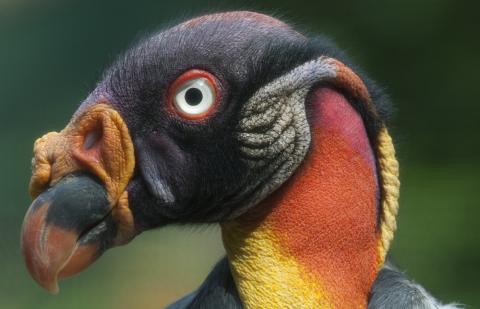
Fun Facts About King Vultures
This story appears in the May 2017 issue of National Zoo News. Learn more about king vultures at the Bird House outdoor exhibit!
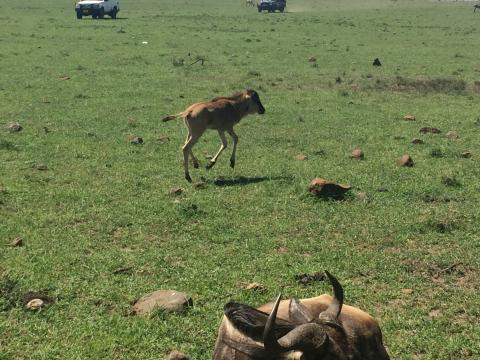
Fantastic Wildebeests and Where to Find Them
It’s not easy to be low on the food chain. But white-bearded wildebeests face a threat even greater than lions and leopards. Habitat loss and fragmentation are causing an alarming collapse in their numbers, says Smithsonian Conservation Biology Institute scientist Jared Stabach. In March, he...
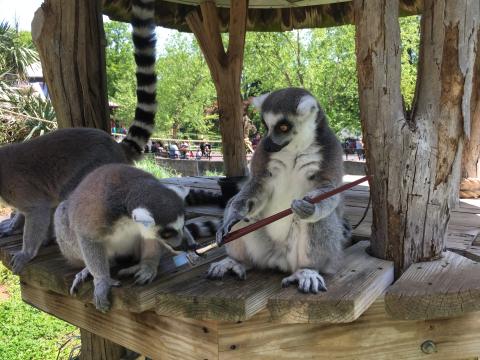
A Day in the Life of a Primate Keeper
Ever wondered what it would be like to care for an endangered animal? For the team who works with the Smithsonian's National Zoo's primates-- gibbons, siamangs, lemurs, orangutans and gorillas, among others-- the job entails thinking of creative ways to provide these intelligent animals with...
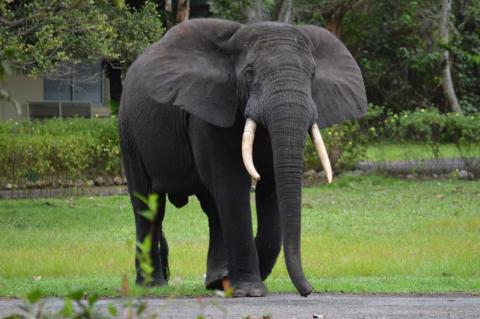
Saving Gabon’s Forest Elephants
Every fall, forest elephants venture onto Shell Gabon’s Yenzi camp in search of mangos, putting both animals and humans in jeopardy. Smithsonian Conservation Biology Institute scientists are helping the camp’s staff manage and safely share the land on which both elephants and humans depend.
Smithsonian-led Study Lays Groundwork To Uncover Role of Migration in Bird-Population Declines
The period of a migratory bird’s annual cycle thought to be the most perilous—its twice-annual journeys over oceans and inhospitable landscapes—is also the least understood. A new collaborative study led by the Smithsonian Migratory Bird Center (SMBC) synthesizes what is already known and outlines...

A Surprise Egg
In March, female Cuban crocodile Rose underwent a series of tests to determine if she is still capable of producing healthy eggs. It all began with an egg — a perfectly smooth, white, oval-shaped, normally-sized egg — that Rose laid two months early. Nesting season for Cuban crocodiles does not...
Smithsonian Scientists Examine Impact of High-Severity Fires on Conifer Forests
The ability of some conifer forests to recover after severe fire may become increasingly limited as the climate continues to warm, Smithsonian Conservation Biology Institute (SCBI) scientists found in a new study published today in Global Change Biology. Although most of these cone-bearing evergreen...
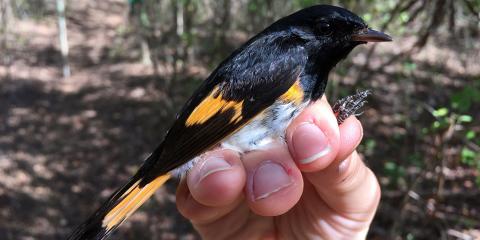
Winter Ecology in Jamaica Expedition Blog
It has been a busy field season tracking the ecology of migratory birds down here at the long-term study site at the Font Hill Nature Preserve in southwest Jamaica. This year, we’ve been working on projects that include assessing how wintering bird populations change through time, the consequences...
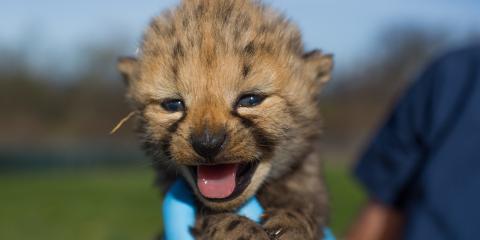
Smithsonian Conservation Biology Institute Announces Names of Five Cheetah Cubs
Last week, the public was invited to help name five of the 10 cheetah cubs born in late March at the Smithsonian Conservation Biology Institute (SCBI) in Front Royal, Virginia. T he cheetah cubs have been named Maathai, Fossey, Murie, Leopold and Roosevelt.

Coral in Crisis
Smithsonian Conservation Biology Institute's Mary Hagedorn and the Reef Recovery Initiative have been making great strides in the effort to save the world’s coral reefs.

Earth Optimism: Cheetahs
First come cubs, then comes species recovery. Find out how a thriving population in human care benefits wild cheetahs.

Earth Optimism: Elephants
WATCH: The Smithsonian's National Zoo and Conservation Biology Institute's care and study of Asian elephants has a positive impact on the species.

Help the Smithsonian Conservation Biology Institute Name Its Cheetah Cubs
The public is invited to help name five of the 10 cheetah cubs born in late March at the Smithsonian Conservation Biology Institute (SCBI) in Front Royal, Virginia.

An Andean Bear Adventure (Part II)
What does it take to care for an Andean bear? In March, Smithsonian’s National Zoo and Conservation Biology Institute (SCBI) staff returned to Peru—the bears’ home turf—to share their expertise.
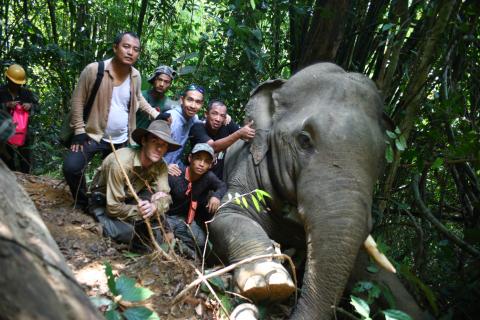
Earth Optimism: Helping Wild Elephants Where They Roam
Why is this Asian elephant wearing a collar? He’s one of four pachyderms whose movements and behaviors are being tracked via satellite! This information helps SCBI scientist John McEvoy and partners understand the causes of human-elephant conflict and find solutions to help animals and people...
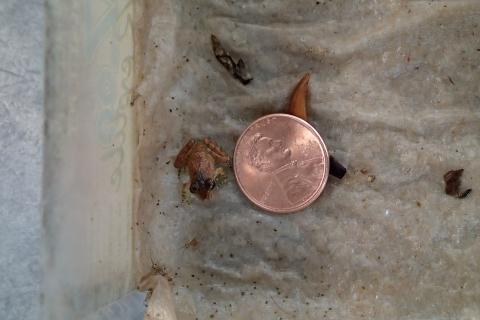
Earth Optimism: A Vanishing Species Reappears
When researchers discovered Craugastor evanesco in the rainforests of Panama, they called it the vanishing robber frog. Now, however, the species may have a fighting chance at a future thanks to the Panama Amphibian Rescue and Conservation Project, which in December became the first program to breed...
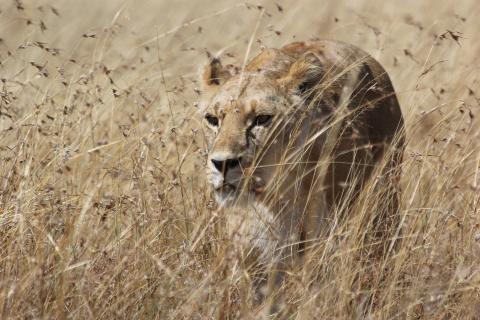
Earth Optimism: Saving the Savannah’s Great Cats
Sometimes, even top predators need a leg up in order to survive. The recent boom in Kenya’s human population prompted people to sprawl and build their homes on the savannah. As a result, increased competition among wildlife for territory, food, water and mates can spell trouble for many the animals.
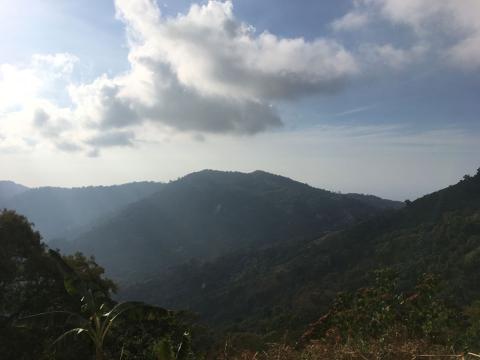
Colombia Expedition Blog
Breeding Birds Between (Coffee) Bushes La Sierra Nevada de Santa Marta of Colombia has two seasons: dry and wet. Even in the dry season, though, rainfall and cloud cover can be common, just like there are sunny days during the wet season. Some coffee farms simply cannot plant a lot of shade over...
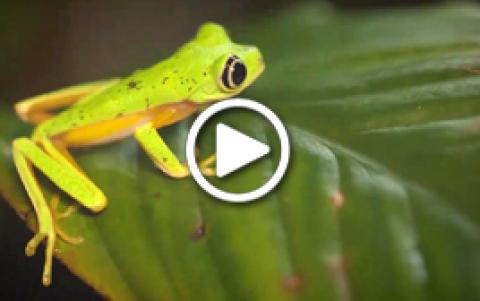
Earth Optimism: Saving Frogs with Science
Smithsonian Conservation Biology Institute scientists are saving frogs with science. Release trials in the wild begin spring 2017. On Earth Day weekend, the Smithsonian is convening the Earth Optimism Summit, an event about the science that's working to solve complex conservation challenges around...
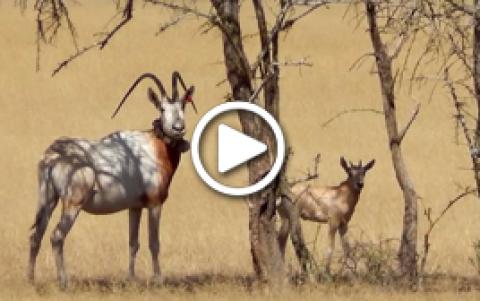
Earth Optimism: Oryx
Extinct in the wild for more than 35 years, scimitar-horned oryx are back in their native habitat thanks to international collaboration and the power of science.
Smithsonian Scientists Discover Two Colorful Geckos in Vanishing Myanmar Rainforest
Smithsonian scientists have discovered two new gecko species, the Lenya banded bent-toed gecko and Tenasserim Mountain bent-toed gecko, in the little-studied lowland forests of Myanmar.
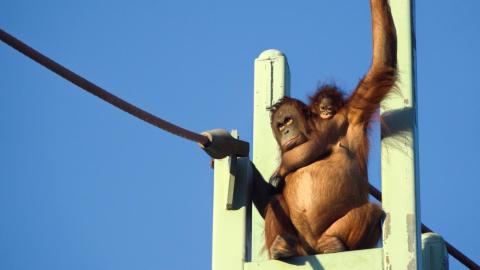
Bornean Orangutan Infant Crosses O-Line for the First Time at the Smithsonian’s National Zoo
On April 4, the Smithsonian’s National Zoo’s nearly 7-month-old male Bornean orangutan, Redd, took his first trip on the O-Line carried by his mother, Batang. The 50-foot-high suspended cable track gives orangutans the choice and freedom to move between their yards at the Great Ape House and Think...
